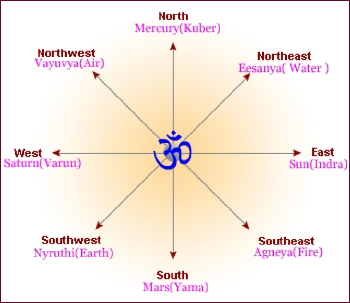Introduction:
Interior design is not only about creating visually appealing spaces but also about fostering a sense of harmony and balance. Vastu Shastra, the ancient Indian science of architecture, offers valuable insights into how interior design can influence the flow of energy within a space. By integrating Vastu principles into your interior design, you can create a harmonious environment that not only looks beautiful but also promotes positive energy flow. In this comprehensive blog post, we will explore the relationship between Vastu and interior design, and how they can be blended to create aesthetically pleasing and energetically balanced spaces.
Understanding Vastu Principles:
To illustrate the importance of Vastu principles in interior design, let’s consider an example. Imagine you are designing a living room. Understanding the directional orientations in Vastu Shastra, you would position the seating arrangement in the northeast or north direction to promote positive energy flow and create a harmonious gathering space.
Entryway and Reception Area:
Creating an inviting entryway is crucial to set the tone for the energy that flows within. Let’s take an example of a reception area in an office. To create a welcoming environment, you can paint the reception desk in a warm color like orange or red, which symbolize prosperity. Placing a beautiful mirror near the entrance can attract positive energy and create a sense of flow.
Layout and Furniture Placement:
The layout and placement of furniture play a crucial role in creating an energetically balanced interior. Consider a dining room as an example. To optimize the flow of energy, you would arrange the dining table in a way that allows easy movement around it, avoiding sharp corners or blocking pathways. This arrangement promotes harmonious conversations and joyful meals.
Color Psychology and Vastu:
Color selection is an essential aspect of interior design. Let’s take the example of a home office. To create a focused and productive atmosphere, you can choose calming colors like shades of blue or green for the walls. Avoid using stimulating colors like bright red or vibrant orange, as they can be distracting. This color scheme aligns with Vastu principles and promotes a balanced and harmonious work environment.
Lighting and Ventilation:
Proper lighting and ventilation significantly impact the energy flow in a space. Consider a bedroom as an example. You would incorporate large windows to maximize natural light and install adjustable layered lighting with dimmers to create a soothing and relaxing ambiance. Adequate ventilation ensures fresh air circulation, promoting a sense of vitality and well-being.
Materials and Textures:
The choice of materials and textures contributes to the overall energy of a space. For instance, in a living room, you can opt for natural materials like wooden flooring or furniture, stone accents, and soft fabrics like cotton or linen. These materials create a grounded and soothing atmosphere, enhancing the energy flow.
Creating a Harmonious Bedroom:
The bedroom serves as a sanctuary for rest and rejuvenation. Let’s use an example to illustrate Vastu principles in bedroom design. You would position the bed against a solid wall in the southwest corner of the room, ensuring it has a sturdy headboard for support. Soft lighting with warm-toned bedside lamps can create a cozy and serene environment, facilitating a restful sleep.
Balancing Workspaces:
Workspaces should strike a balance between productivity and well-being. Consider an example of a home office. To optimize focus and efficiency, you can position the desk near a window to allow natural light and a view of nature, promoting inspiration and a sense of connection to the outside world. Incorporate organizational tools like shelves or filing cabinets to maintain a clutter-free and efficient workspace.
Sacred Spaces and Altars:
Creating a sacred space or altar requires careful consideration of Vastu principles. Let’s take an example of a meditation room. Positioning the meditation cushion or sacred altar in the northeast corner of the room, facing east, aligns with Vastu principles. Decorating the space with meaningful symbols, such as a Buddha statue or incense, enhances its sanctity and promotes spiritual practices.
Balancing Yin and Yang:
Achieving a balance of yin and yang energies is essential in interior design. Consider an example of a living room. You can combine soft textures like plush rugs and cushions with more angular furniture pieces. This balance of textures creates a harmonious and dynamic environment. Additionally, use a mix of natural and artificial lighting to create a balanced and inviting atmosphere.
Conclusion:
By blending Vastu principles with interior design, you can create spaces that are visually appealing, functional, and energetically balanced. The examples provided demonstrate how each aspect of interior design can be influenced by Vastu principles, promoting positive energy flow and enhancing overall well-being.

